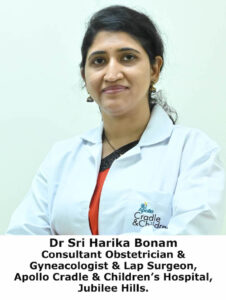India
healthysoch
New Delhi, November 14, 2023:
 Gynaecology is an area of medicine that involves treatment of women’s problems, especially those of reproductive organs & related issues. Most common gynaecological problems requiring surgery include infertility (inability to conceive), fibroids in the womb, heavy menstrual bleeding, ovarian cysts, endometriosis, ectopic pregnancy, urinary incontinence etc & the list is exhaustive. A wide variety of treatment options, failing which usually a surgery is offered.
Gynaecology is an area of medicine that involves treatment of women’s problems, especially those of reproductive organs & related issues. Most common gynaecological problems requiring surgery include infertility (inability to conceive), fibroids in the womb, heavy menstrual bleeding, ovarian cysts, endometriosis, ectopic pregnancy, urinary incontinence etc & the list is exhaustive. A wide variety of treatment options, failing which usually a surgery is offered.
Traditionally these surgeries have been performed by giving a cut on the tummy, known as laparotomy. But ever since laparoscopy (keyhole surgery) has been started from early 1900’s a lot of advances happened in minimally invasive surgery fields making it one of most safe & cosmetic way of surgical approach.
What is laparoscopy?
Laparoscopy is a type of surgery in which the surgeon can visualise the organs inside the tummy after giving 2-4 tiny cuts of 5mm size, distending it with CO2 gas, placing a light source & others instruments to complete the surgery. It’s usually done under general anaesthesia where in the women is put to sleep during the procedure. End of the surgery the gas is let out & the cuts are closed with glue.
‘Even if you have scars, you are still beautiful. Scars are tattoos with better stories’.
What are the surgical fields in which laparoscopy can be done?
It can be used to diagnose or treat various gynaecological, surgical, urological etc… conditions.
What are the advantages over the conventional open method?
Advantages to the women include cosmetic scars, less blood loss, less pain, rapid recovery, shorter hospital stay, better satisfaction & minimal complications like hernia, blood clots in the legs, infections, adhesions etc It also gives the surgeon better opera=ng field & less physical strain in the form of retraction unlike in open surgeries
Does laparoscopic surgeries have any disadvantages?
In case of unanticipated findings or untoward complications there may be a need of conversion to laparotomy (open surgery), regarding which detailed counselling will be done prior to the surgery.
Also the equipment & the procedure cost is more than the open methods.
What complications can happen during/ after laparoscopy?
Minor complications like feeling sick, vomiting, infection, bruising at cut site can happen in 1 in 100, but they resolve spontaneously. However rarely certain serious complications like injury to the adjacent organs(intestines, urinary bladder, blood vessel), can happen especially after multiple previous surgeries due to adhesions.
Who cannot have laparoscopy?
Women who have significant cardiorespiratory problems wherein they cannot tolerate prolonged abdomen distension with gas or prolonged anaesthesia might not be fit enough to go for laparoscopic surgeries, but the decision will be made by the multidisciplinary team.
Is there anything better than laparoscopy?
‘Robo=c assisted laparoscopy’ is an advance wherein the surgeon uses a console to perform the procedure, by controlling the robotic arms. The robotic system provides 3D vision, better precision & allows surgeon to perform more complex procedures. Available evidence says that it has lesser complication rate & better recovery than regular laparoscopy or open methods. But it’s very expensive in the current scenario. ‘Laparoscopy is an art. The science of today is the technology of tomorrow.
healthysoch







